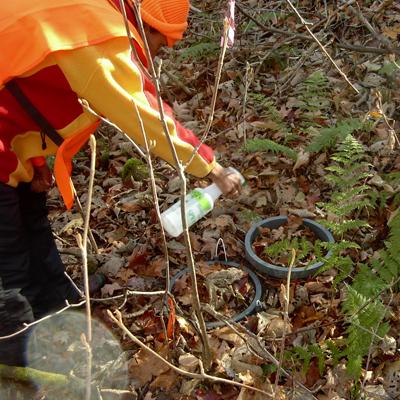Northeastern Nitrogen Gases Working Group

Uncertainty about the fate of nitrogen from atmospheric deposition has led to increased interest in nitrogen gas production. The gases nitric oxide (NO), nitrous oxide (N2O), and dinitrogen (N2) are produced by microorganisms in soils and sediments and can account for a significant percentage of the nitrogen that enters ecosystems from the atmosphere. However, these fluxes are difficult to quantify because of problematic measurement techniques, high spatial and temporal variability, and lack of methods for scaling point measurements to larger areas.
The NSRC Northeastern Nitrogen Gases Working Group 1) evaluated the importance of nitrogen gas fluxes to ecosystem fertility, water quality, and air quality questions in the region, 2) shared information on methods for measuring and modeling nitrogen gas fluxes, and 3) developed research proposals to address interactions of nitrogen gas fluxes with atmospheric deposition, vegetation change, and climate change. Researchers used two new methods for measuring nitrogen gas fluxes at the Hubbard Brook Experimental Forest in New Hampshire and found higher fluxes of nitrogen gases than expected, suggesting that there is a need to re-examine assumptions about the importance of nitrogen gases in the Northern Forest.
Researchers shared information on methods for measuring and modeling nitrogen gas fluxes at a conference on “Denitrification Modeling across Terrestrial, Freshwater and Marine Systems” at the Cary Institute of Ecosystem Studies in New York in November, 2006. The workshop was jointly funded by NSRC and the National Science Foundation Research Coordination Network led by Sybil Seitzinger (Rutgers University) and Eric Davidson (Woods Hole Research Center). Details can be found at http://denitrification.org/.
